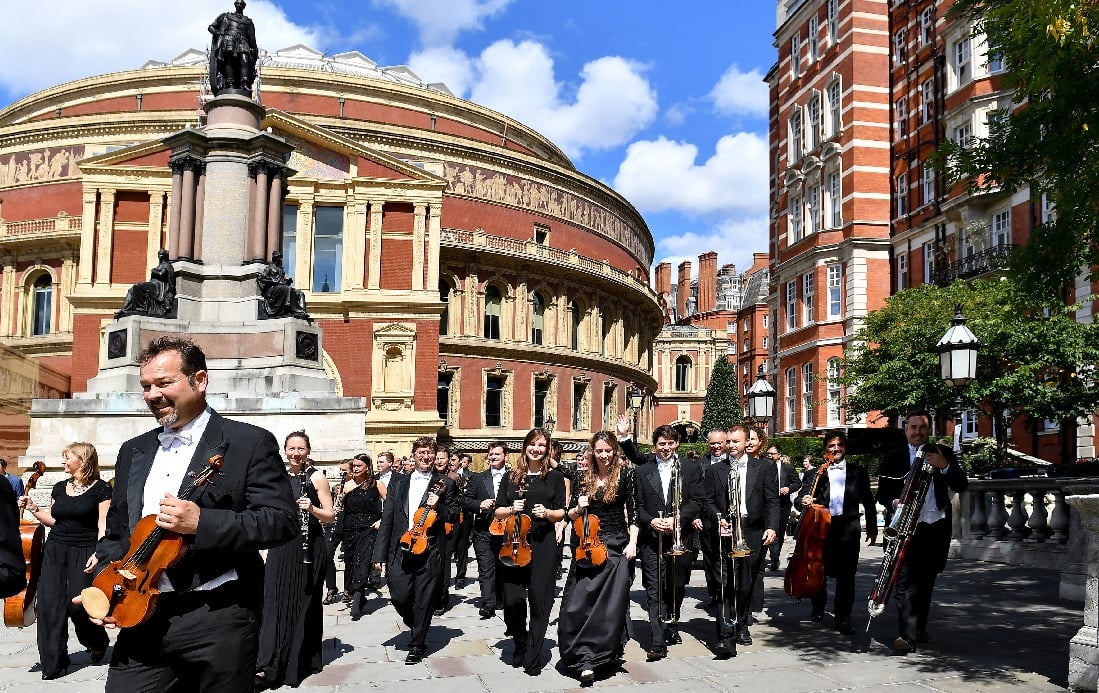
The Royal Philharmonic Orchestra at Royal Albert Hall
Photo: Chris Christodoulou
Orchestral music’s popularity grew in lockdown
Movie scores and video game soundtracks are broadening the genre's appeal, attracting a new generation of fans who are more likely to donate.
Orchestral and classical music's popularity grew during lockdown, a trend that appears set to continue, according to new research.
Surveys of 8,000 households commissioned by the Royal Philharmonic Orchestra (RPO) between March and November 2020 found interest in orchestral and classical music grew from 35% to 59%.
The RPO, like many other orchestras, experienced a spike in interest online during spring. Website visitor numbers grew by 290% and the ensemble fielded a 755% increase in social media engagement.
READ MORE:
As the country emerged from lockdown in the summer, the orchestra said it wanted to know whether changing attitudes towards orchestral music were "a momentary reaction or whether something more substantial and sustained was shaping consumer views on music".
It found 85% of people used the time in lockdown to broaden their cultural horizons, with a third of these wanting to learn more about orchestral, opera and chamber music. One in six respondents said they would continue exploring the music they discovered during lockdown.
Continued interest was highest among young people. Just under a quarter said they would keep up their lockdown listening habits, while a fifth said they would continue to watch concerts online.
Contemporary culture
Young people are driving the genre's growing popularity, a trend the RPO attributes to orchestral music's growing role in contemporary culture.
At the start of 2020, more than a third (35%) of adults said they were interested to learn more about orchestral music – a rise from 22% in 2018.
This growth was highest among under-35s, where one in four showed interest in learning more about the genre.
While older audiences favour traditional works, under 25s were most interested in concerts featuring crossover music or movie soundtracks. Under 35s were drawn to concerts featuring computer or video game scores.
The under-35 age group was also more likely – three times as likely as over-55s – to donate to arts organisations affected by the lockdown.
Everyday events
The growing association of orchestral music with everyday tasks may go some way towards explaining rising interest in the genre during lockdown.
By the start of 2020, people were as already as likely to listen to orchestral music while doing the housework as they were to visit a concert hall.
Since 2018, more people are listening while working (up from 8% to 19%), cooking (23%), gardening (12%), or taking a bath (17%).
During lockdown, people set out to learn more about the genre through online and television documentaries (22%), reading (20%) and podcasts (19%). 17% watched performances, interviews or broadcasts relating to orchestral music via social media.
Huw Davies, Deputy Managing Director of the RPO, said: "The groundwork done over the previous years to reconnect new audiences with the genre meant it was there to help more people during the challenging pandemic months when it mattered most."
Caution over concerts
More people listening to orchestral music doesn't necessarily mean more concert-goers: in summer, nearly half (48%) of people said it would be at least six months before they attended an in-person event.
Safety overtook price as the top concern for potential concert attendees for the first time in 2020.
Even when safety measures such as social distancing, reduced capacity and hand santiser stations were in place, 15% of people still would not attend. The RPO's surveys did not ask about mandatory masks.
Less than a third of respondents (29%) said the vaccine made them feel comfortable attending concerts again.
Join the Discussion
You must be logged in to post a comment.